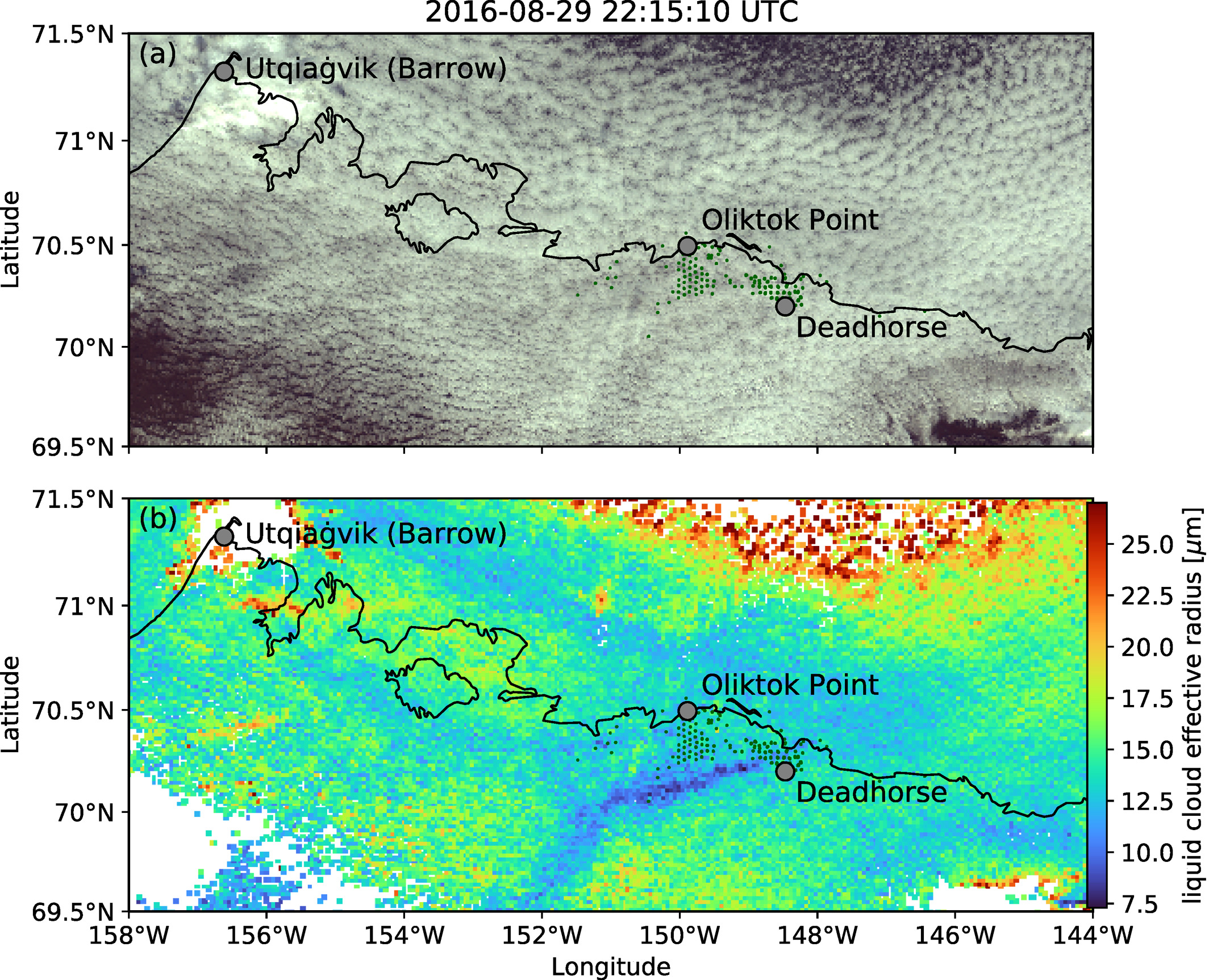Arctic industrial aerosol particles impact clouds
Submitter
de Boer, Gijs — Brookhaven National Laboratory
Maahn, Maximilian — Leipzig University
Area of Research
Cloud-Aerosol-Precipitation Interactions
Journal Reference
Maahn M, T Goren, M Shupe, and G Boer. 2021. "Liquid containing clouds at the North Slope of Alaska demonstrate sensitivity to local industrial aerosol emissions." Geophysical Research Letters, 48(17), e2021GL094307, 10.1029/2021GL094307.
Science

Figure 1. Case study showing the impact of local emissions on cloud properties. (a) Terra Moderate Resolution Imaging Spectroradiometer (MODIS) true color image and (b) MODIS liquid cloud effective radius retrieval on 2016-08-29 at 22:15:10 UTC with clear areas indicating areas without liquid clouds. Black lines show shorelines and dark green dots mark oil wells. The case shows a change in cloud brightness and downwind of the eastern part of the Prudhoe Bay region where the emission inventory reports the highest sulfur dioxide emissions. From journal.
This work demonstrates that the particles emitted by anthropogenic industrial activities in the Arctic impact the properties of clouds locally.
Impact
As industrial activity in the Arctic increases, this work supports understanding of the potential influence of such increases on climatically important cloud properties such as reflectivity and cloud droplet size.
Summary
This study gives a first estimate on the types of cloud perturbations that might be possible in the future in other industrialized regions of the Arctic. In a future warmer, more easily accessible Arctic, industrial activities are expected to increase, potentially leading to rising local-source aerosol concentrations. Assuming that industrial emissions related to oil extraction produce higher emission than other anthropogenic activities in the Arctic, this study provides an upper boundary for microphysical and radiative effects related to localized pollution. Additional work is required to fully understand the impact of localized pollution on the ice phase of liquid-containing clouds. Specific findings include that for liquid and mixed-phase clouds, liquid effective radius is reduced in the Prudhoe Bay by up to 1.0 µm when averaging over the full data set. For individual cases, the reduction can be larger. Changes in cloud frequency of occurrence and liquid water path are thought to be small (<2% and <5 g m-2, respectively), as they are overshadowed by local spatial gradients associated with the coastline. These impacts combine to increase upwelling radiation by approximately 0.79 W m-2 between April and September.
Keep up with the Atmospheric Observer
Updates on ARM news, events, and opportunities delivered to your inbox
ARM User Profile
ARM welcomes users from all institutions and nations. A free ARM user account is needed to access ARM data.


















